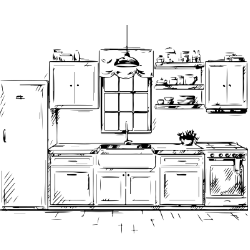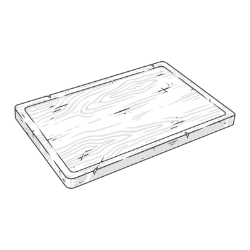
Do You Need a Range Hood Backdraft Damper? All You Need to Know

A hood backdraft damper advertises itself as an effective way to keep outside air out of your home, which can decrease utility bills. Will it really make a difference or is it unnecessary? Do you need one if you have a ductless model? Our experts will answer all these questions below and more.
What is a Range Hood Backdraft Damper?
A hood backdraft damper is a small component that lives within your ductwork, which is why it’s mostly utilized for ducted range hoods.

Not only does it prevent air from entering your home, it can also prevent solid dust particles and debris or any other airborne threats from entry, which is great for windy days and it can even keep small animals out.
How Does it Work?
A hood backdraft damper will open when your hood is turned on and close when it’s off, in order to block outside air from reversing through the ducts and into your home.
Makeup Air
What is makeup air? It is air that makes up for air that is removed from your home. This is more needed if you have a ducted range hood. The key to deciphering whether or not you need a makeup air kit for your range hood is to look at the CFM (cubic feet per minute).
The CFM is the amount of air your unit moves within a minute. The more air a ducted hood moves, the more air you’re “losing”. This basically means a higher CFM hood will require a makeup air kit more than one that is rated lower.

However, that’s not the only indicator that a makeup air kit is needed. Ducted hoods without a backdraft damper may be losing air all-year round as well. Although the difference may be negligible, but once you pair it with a high-powered range hood, you may start to notice the variance.
If you have a habit of leaving your range hood on for air circulation, then you may also need a makeup air kit. Our experts say if your range hood has a 900 or over CFM rating, you can consider a makeup air pack.
Installation
As our construction team mentioned, the backdraft damper goes inside your ductwork, but how do you install it?
Make sure that you protect the surface of your cooktop with a covering, and then move to unscrew the chimney cover from the mounting bracket.
Once the duct is revealed, unscrew the venting and the air damper and slide them forward and out of place. The next step is to unscrew and separate the venting and the air damper from the piece you just removed. Once that’s done, you can install the new backdraft damper by attaching it to the new venting and screwing it in place.

Once that’s done, just reverse all the steps to reinstall everything and then you’re good to go!
Why You Need a Backdraft Damper
If you live in a colder climate, our team strongly suggests a backdraft damper because the winter months, when your heaters are turned on full blast, will really increase your utility bills if cold air keeps seeping in. The same goes for people who live in extra hot climates and the AC is running on full power in the summer.
If you want to decrease your utilities, keep possibly polluted air, debris or even small animals from entering your home, then we would suggest a backdraft damper for your ducted range hood.
FAQ
How do you stop a backdraft from a range hood?
You can stop back draft from a range hood if you install a backdraft damper. Not every household needs one, and they work with ducted units only. If you have a high CFM hood, and live in colder or hotter climates, then we highly suggest installing a air damper.
Conclusion
A range hood backdraft damper is a highly useful component for ducted range hoods that is inexpensive and requires minimal installation. You can do it yourself or hire a professional, but having one will impact your utilities through summer and winter months plus prevent outside contaminants and threats [1], or even insects, arachnids, and small animals from entering your home.





